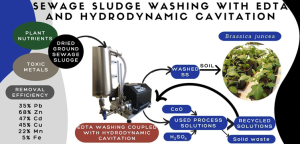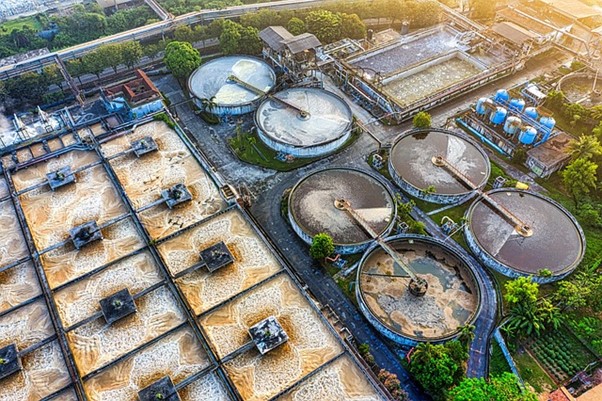Researchers from the Biotechnical Faculty, in collaboration with researchers from the Faculty of Mechanical Engineering – Laboratory of Hydraulic Machines – have shown that hydrodynamic cavitation together with ethylenediamine tetraacetate (EDTA) can be used on a pilot scale to remove toxic metals from sewage sludge. The study was published in high ranking journal Science of The Total Environment (IF: 9.8).

Figure 1: Graphical presentation of the research study
They managed to effectively remove Pb, Zn, Cd, Cu, Mn and Fe from sewage sludge. These results are very encouraging as the toxic metals hinder the use of sewage sludge as a fertilizer in agriculture. Moreover, they have shown that phosphorus, which is one of the main nutrients of sewage sludge, remains in the sludge after the treatment and that the plant-available phosphorous increases 3.3-fold. The presented approach therefore offers a solution to phosphorus deficiency caused by soil erosion, especially in tropical and subtropical regions.
Article is available at: https://doi.org/10.1016/j.scitotenv.2024.171444
